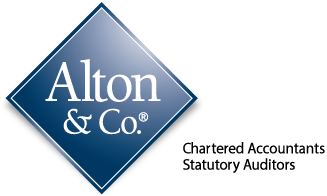VAT has created some amusing aspects of the tax regime in the UK over the years. Indeed, it was a VAT tribunal that officially defined Jaffa Cakes as cakes; a debate about whether flapjacks are biscuits or cakes for tax purposes swirls, while Greggs allows its food to cool to side-step VAT.
Unfortunately, VAT also creates some of the biggest headaches for business owners tackling their tax obligations.
That’s why we put this VAT guide together. With it, you’ll know what VAT is, whom it applies to, how it works and your responsibilities.
What is VAT?
VAT, which stands for ‘value added tax’, is a consumption tax that applies to most goods and services.
It’s one of the three taxes that make up the majority of tax receipts next to income tax and National Insurance, raising £157.5 billion in the 2021/22 tax year — 22% of all the money HMRC collected that year.
The current standard rate of VAT is 20%, which means an additional 20% is added to the price of many goods and services at the point of sale.
Reduced rates of 5% and 0% apply to certain goods and services such as children’s car seats, domestic fuel and power, and most food items.
These different rates can sometimes cause disagreements about what good or service is classed as what, like whether a Jaffa Cake is a ‘staple food’ (zero-rated) or ‘luxury food’ (taxed at 20%).
The 0% reduced rate differs from VAT exemptions — you still have to account for zero-rated goods on VAT returns. Exempt VAT items include:
- insurance, finance and credit
- education and training
- fundraising events by charities
- subscriptions to membership organisations.
Who has to charge VAT?
The VAT threshold in the UK is £85,000. This means any business, including self-employed workers and limited companies, must register for VAT when their taxable turnover exceeds £85,000.
If a business expects its taxable turnover to exceed £85,000 in the next 30 days, it also must register for VAT.
Nevertheless, you can still register your business for VAT regardless of turnover. Doing so comes with some benefits that may counteract the extra administrative burden VAT imposes.
Once registered, you must apply VAT to your goods and services and pay back the tax money you get from customers to HMRC. In that sense, VAT-registered businesses collect tax on behalf of HMRC.
What are your VAT responsibilities?
There are several things you must do to comply with tax regulations:
- Charge the correct VAT. Standard rate, reduced rate, zero rate and exemptions — apply the correct one to remain VAT-compliant.
- Keep records. You must keep accurate records of all your VAT transactions, including sales, purchases, and payments.
- Submit VAT returns to HMRC. Usually done every quarter. Your returns should include details of all your VAT transactions for the period. The deadline for submitting an online return is one calendar month and seven days after the end of an accounting period.
- Pay any VAT you owe to HMRC. The deadline to pay is the same as the submission cutoff date.
- Keep VAT separate. You should keep any VAT that you charge your customers separate from your other business income. You should also keep any VAT you pay your suppliers separate from your other business expenses.
- Notify HMRC of changes. You must keep HMRC informed of modifications to your business that affect your VAT registration, such as your business name or address.
Note that you must comply with Making Tax Digital for VAT rules. Broadly speaking, this means keeping digital records with compatible software and submitting VAT returns electronically.
Claiming back VAT
You can reclaim VAT from HMRC if you pay VAT to suppliers for business purposes. If you paid more VAT than you charged, you’ll get a refund from HMRC; if you paid less, you can pay HMRC the difference.
You can claim a VAT refund by claiming online or completing the form VAT65A.
VAT schemes
There are multiple VAT schemes available to businesses that can slightly or dramatically alter the way VAT works for a business. So far, we’ve broadly outlined the ‘standard VAT scheme’.
There are two others we want to highlight:
- Flat rate VAT scheme. This allows businesses to pay a fixed percentage of their turnover to HMRC instead of calculating VAT on each sale and purchase. The percentage varies but is generally lower than the standard VAT rate. This is good for small businesses with low VATable expenses.
- VAT cash accounting scheme. This allows businesses to pay VAT on sales based on payments they get rather than on invoices they receive. This can be useful for businesses with long payment terms or slow-paying customers.
Believe it or not, we’ve hardly begun to scratch the surface of VAT; but this guide should have helped you with the basics. We’d be happy to help you with everything else VAT-related, from voluntary registration to VAT scheme advice and import and export VAT.
Get in touch with us for VAT advice.

